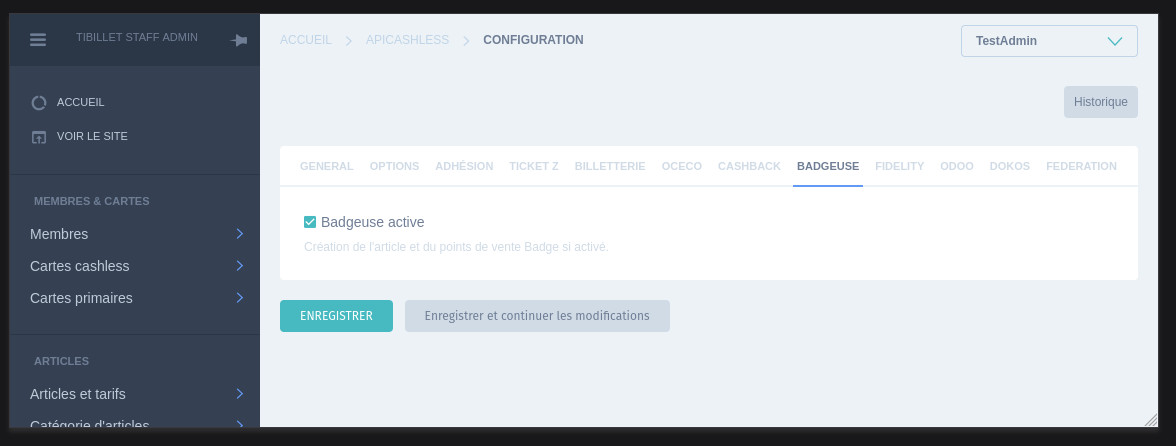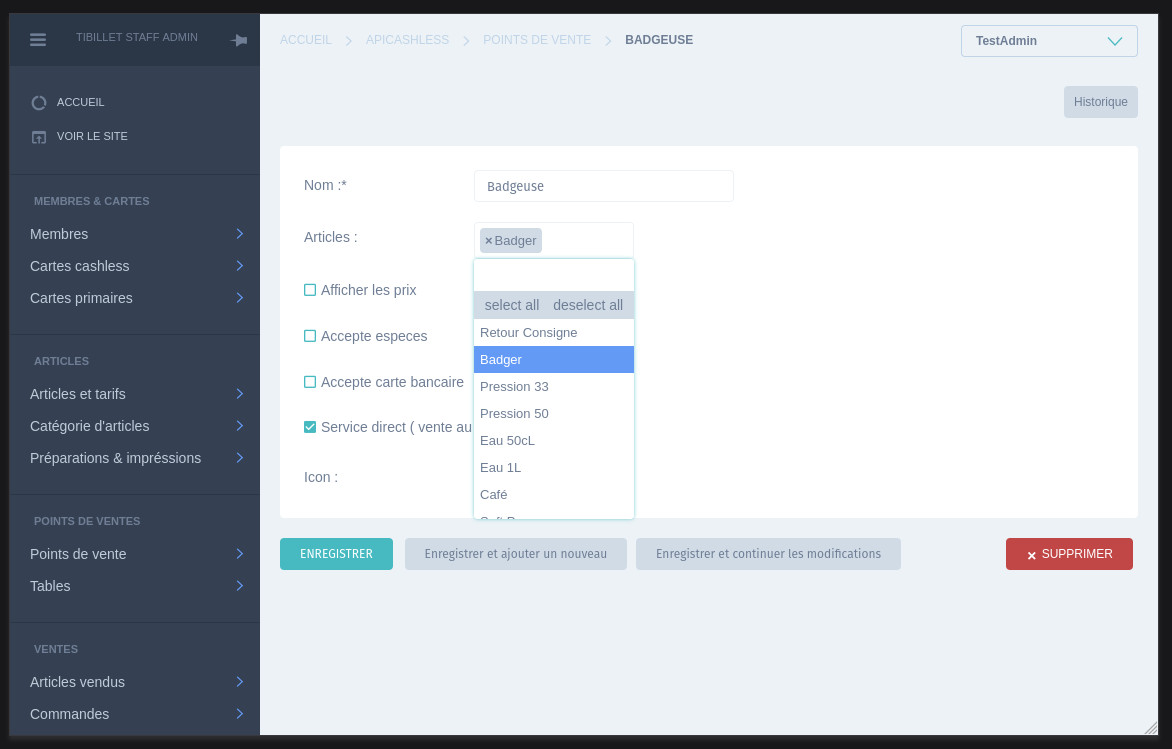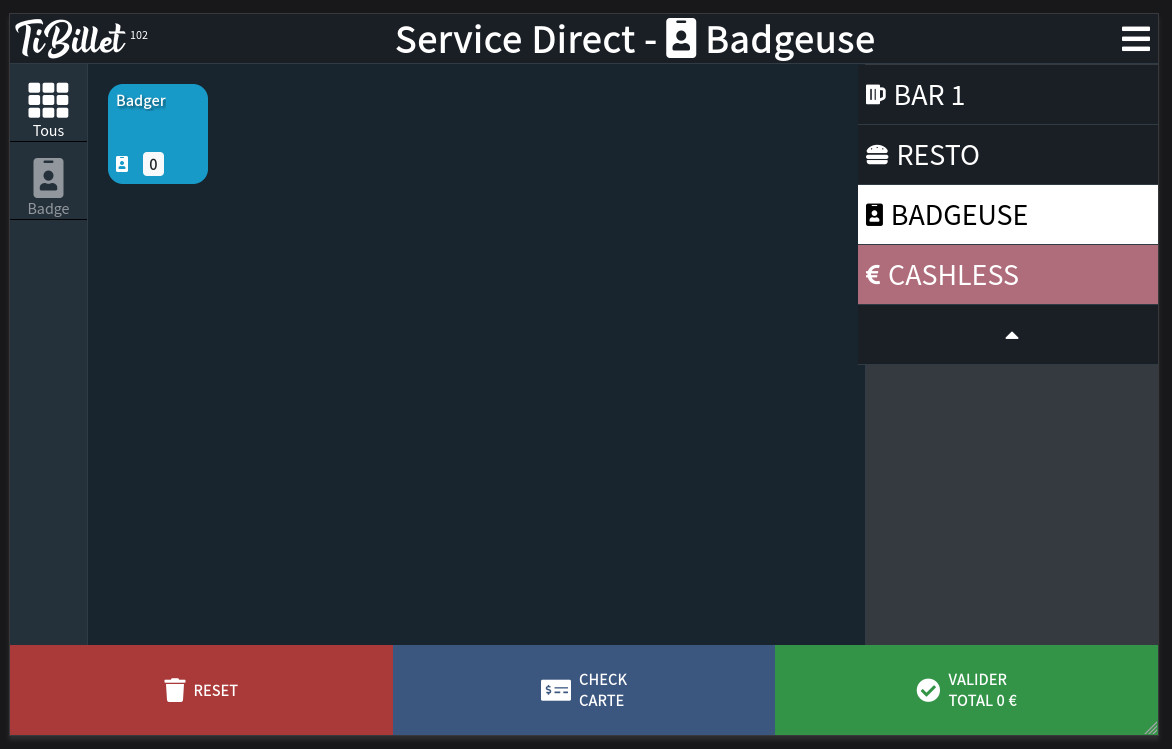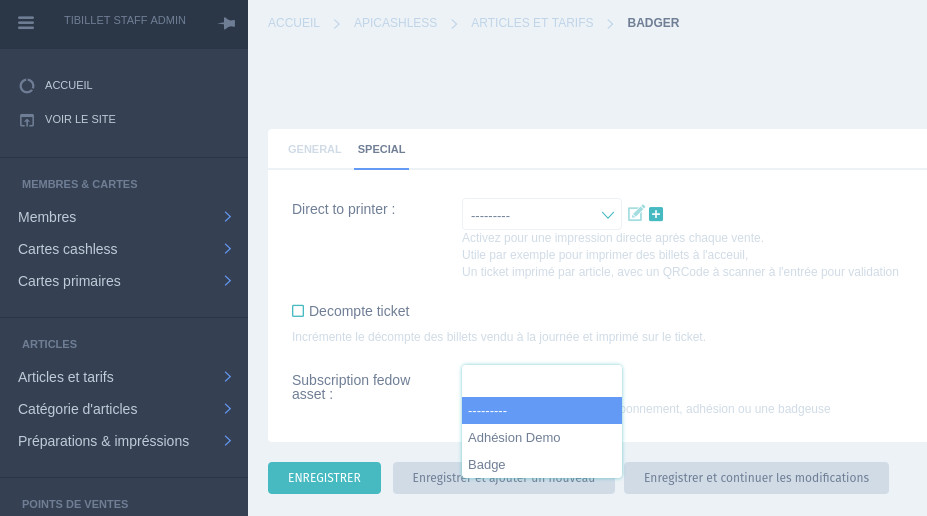Time clock machine
A time clocking system has been developed to count passages at a given point. There are multiple use cases, from simple validation of presence for co-working to recording time spent using a room :
- Access to a location (climbing, rehearsal or dance room, etc.)
- Counting time spent using a location (Fablab, meeting room, training room, etc.)
- Certificate of presence
- Time currency counts (ex: 1 hour of meeting room = 1 token)
- Door opening (need a webhook to a connected lock)
Configuration
Enable the option in the setup menu. This will create the “Time-clock machine” asset and the corresponding item.

You can now add the "Time-clock machine" item to any point of sale.

For greater clarity, you can deactivate "Show prices" if your point of sale only includes the "Time-clock machine" item
Action !
If you have created a new point of sale for the Time Clock card reader, remember to link this point of sale to the primary cards.

To punch a card, select the “Time-clock machine” box, validate, then scan the card.
Report
On the main page (Dashboard), you will find the link to the time spend reports.
You can also access it via the address https://<URL>/rapport/badgeuse/

Passages are sorted by entry/exit pair.
Pooling with FEDOW
A single NFC card for several locations, it's possible! You can connect your Time-clocking machine to FEDOW and thus share the same time system with other third parties. Once the connection is made, the passages will be recorded in the FEDOW blockchain.
Join a TiBillet/Fedow federation, configure the time-clock asset as federated, and you will be able to find it in your cashless instance.
Configure the "Time-clock machine" item on the federated asset. In the Item/Special menu:

You can now punch a card, and the passages will be recorded in the FEDOW blockchain:

Go further with Dokos
You can use TiBillet in solo mode or Fedow for the (Inter-venue badge) Badge inter lieux.
See the corresponding Dokos configuration: https://doc.dokos.io/federation-lieux/federation-de-lieux/api/
Contribution
These features were developed by, for and with the help of :